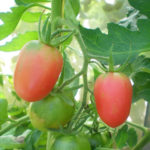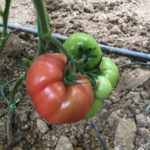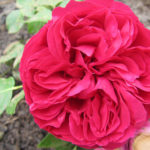Preparing blackberries for winter. Shelter blackberries for the winter
Despite the fact that in the wild, blackberries are found almost everywhere in our country, as a crop they are grown quite rarely. The reason for this lies in its poor cold resistance. This plant is even more thermophilic than its relative, raspberry. However, individual enthusiasts grow it quite successfully in their amateur gardens. Even in spite of the fact that preparing blackberries for winter requires some trouble and effort.

In order for the garden blackberry to successfully overwinter and give a harvest, the following activities must be carried out in the fall:
- trimming;
- bending to the ground;
- shelter.
When to start preparing?
Strong, well-developed plants tolerate winter cold much easier. Therefore, it is necessary to think about future wintering already in the middle of the season. Proper care and formation of the bushes will allow them to come up in the fall in proper shape. This requires:
- make top dressing in a timely manner;
- water regularly;
- remove excess growth;
- destroy weeds;
- loosen the soil under the bushes, if it is not mulched;
- tie up the shoots on the supports.
Pruning
Like other berry bushes, it is customary to prune blackberries twice a year. If in the spring the broken and frozen branches were removed in time, then in the fall it is enough to thin out the bushes and cut off all the fruit-bearing shoots.
In autumn, the following are subject to removal:
- all young branches growing inside the bush and capable of causing it to thicken;
- all biennial shoots;
- the tops of the annual stems of erect blackberries are too long so that the bushes do not stretch out, but branch;
- excessive root growth.
In creeping varieties, the ends of annual shoots are usually not cut off, but are allowed to grow to their maximum length. But it also depends on the design of the site.
Having finished pruning, all waste should be immediately removed from under the bushes and burned - pests and pathogens of various diseases can nest on them.
Bending down
The next preparatory stage is the bending of the shoots. After pruning, the stems of the creeping blackberry varieties are tied together in several pieces - so it will be easier to cover them. The resulting bundles are carefully bent to the ground and secured with special hooks or wire pins.
Varieties with erect stems begin to be prepared for bending in advance. You can even during growth, when the wood is flexible, gradually tilt their tops to the north, tying them to a specially stretched wire. And after dropping the last leaves, bend it to the ground more, so that later it can be covered with the snow that has fallen. But it is permissible and simple at the end of autumn to attach a load to the top of the shoot, which will pull it down.
In any case, the blackberries must be removed from the trellis and laid closer to the ground, so that it is convenient to cover them for the winter.
Shelter
Creeping varieties, as less frost-resistant, are covered even in cases when temperatures are expected to drop below minus 17 ° C. Upright can withstand up to minus 20 ° C. During severe winter frosts, additional coverage is necessary for almost all varieties.
There are quite a few ways to hide blackberries for the winter. Which one to choose depends on the landing site and the availability of the appropriate materials. For this purpose, you can use post-harvest plant residues from your site: tops of root crops, corn leaves, Jerusalem artichoke stalks, straw, hay after mowing the lawn. On top of this layer, a plastic wrap or a non-woven covering material is often thrown over it.But, using such a shelter, it must be remembered that this is a good environment for the development of pest larvae, especially if fallen leaves are used. Love such "shelters" and all kinds of rodents.
Rodents are well scared away by spruce or juniper branches, which can be laid even on top of plant debris. In this case, they will be needed much less than when covered with spruce branches alone, and you will not have to inflict much damage on the surrounding coniferous forests.
Suitable for warming blackberries and sawdust or humus. But during the fall and winter, they become strongly compacted, which is not at all useful in the spring, when the plants need to be “released into the fresh air” as soon as possible.
Let us also admit the option when the shoots are removed from the trellises only with the onset of the first night frost, allowing them to lie down on the ground on their own. And when real cold weather appears, boards are laid down, shoots are put on them and sprayed with copper sulfate. Then the top is covered with hay or straw.








